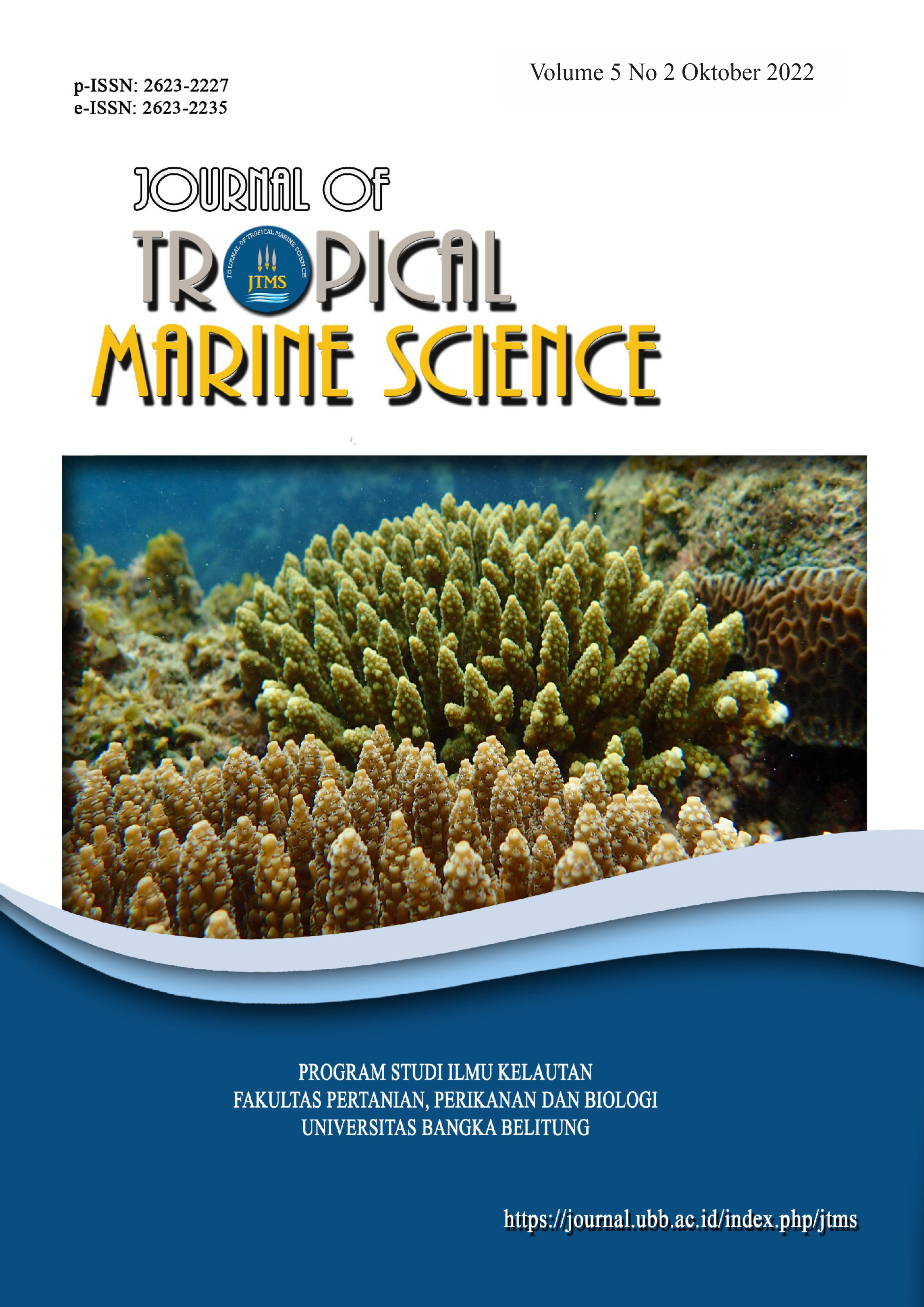Komposisi Vegetasi Mangrove Di Pulau Pahawang, Provinsi Lampung
DOI:
https://doi.org/10.33019/jour.trop.mar.sci.v5i2.3272Keywords:
Vegetation Composition, Mangrove, Pahawang IslandAbstract
The composition of mangrove vegetation on small islands is very important related to its sustainability. The purpose of this study was to determine the composition of mangrove vegetation on Pahawang Island, Lampung Province. Data collection was carried out based on the Forest Health Monitoring (FHM) technique on the mangrove FHM plot cluster. Data analysis by calculating relative frequency, relative dominance, and relative density to get the Important Value Index (INP). The results showed that three species were found that compose the composition of mangrove forest vegetation, namely Rhizophora mucronata, Rhizophora stylosa, and Rhizophora apiculata. The INP values of each species were Rhizophora mucronata of 160,83%, Rhizophora stylosa of 71,54%, and Rhizophora apiculata of 67,64%. In general, the type of Rhizophora mucronata has a wide distribution and has an impact on forest stability. Therefore, Rhizophora mucronata plays an important role as a plant that is resistant to ocean currents due to coastal land erosion, where various marine biota live, absorbs carbon dioxide gas (CO2) and produces oxygen (O2) in that location. The government is expected to carry out mangrove protection activities, so that the function of the mangroves is maintained properly.Downloads
Download data is not yet available.
Downloads
Published
2022-10-02
Issue
Section
Articles



